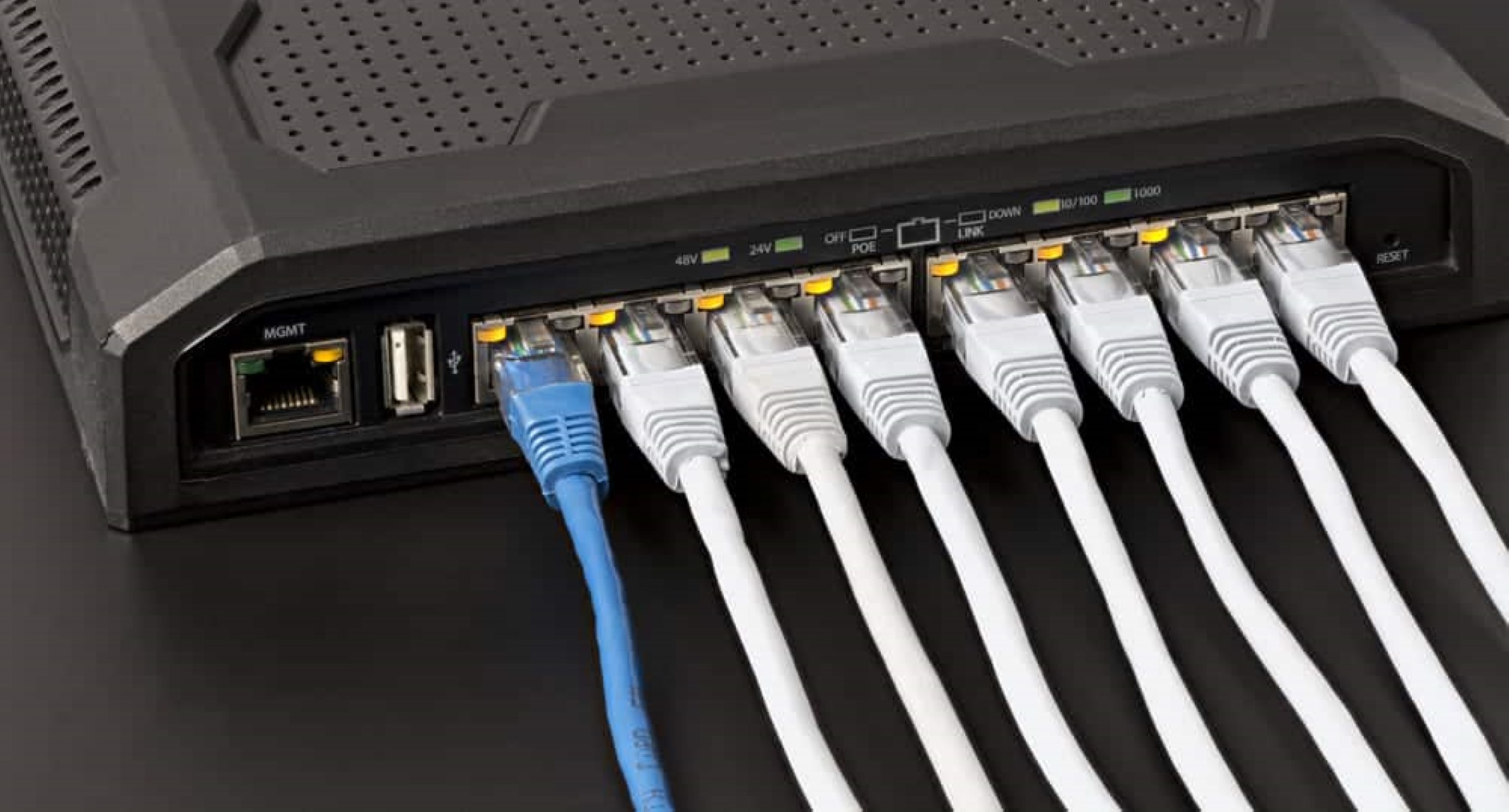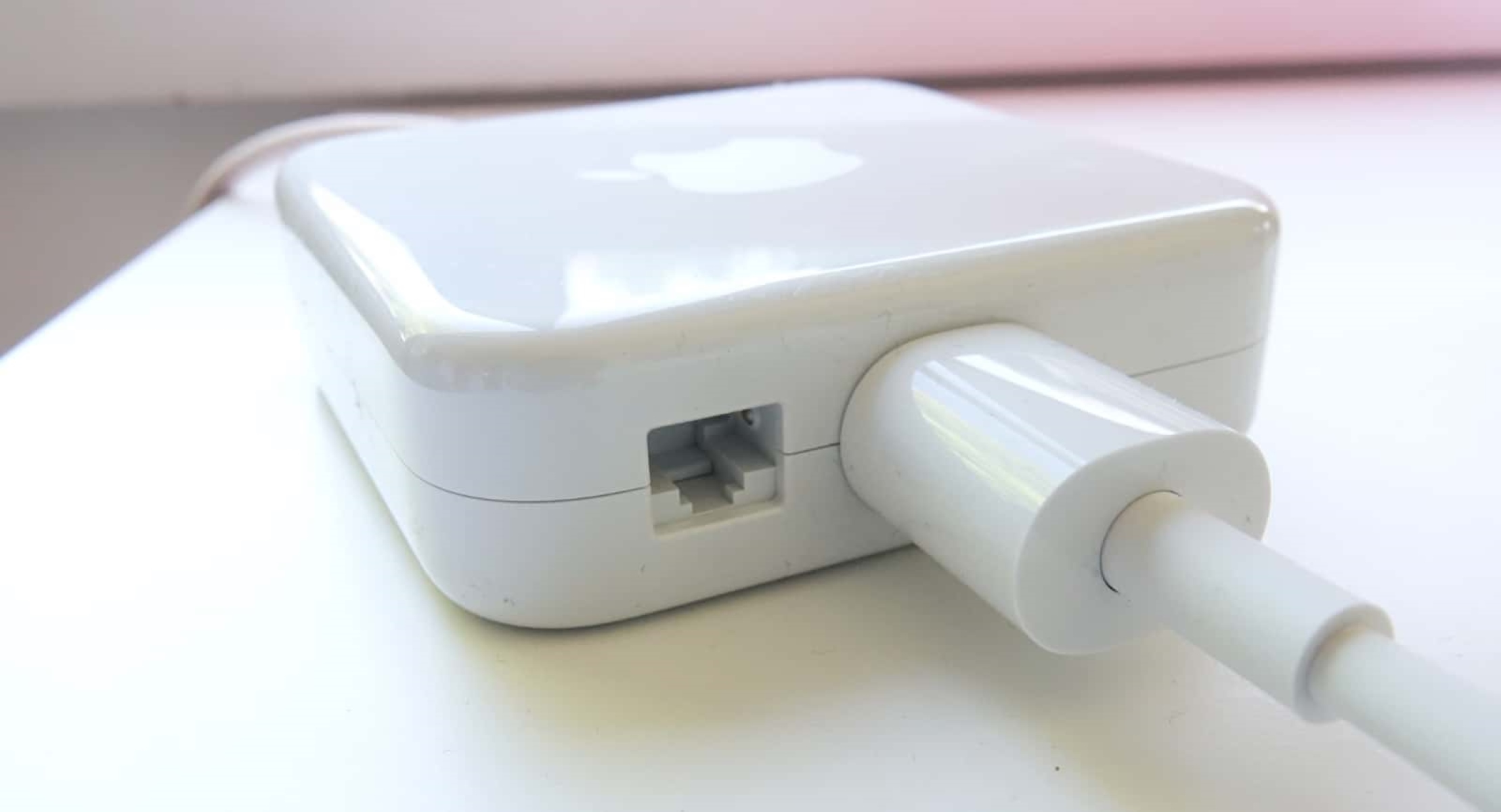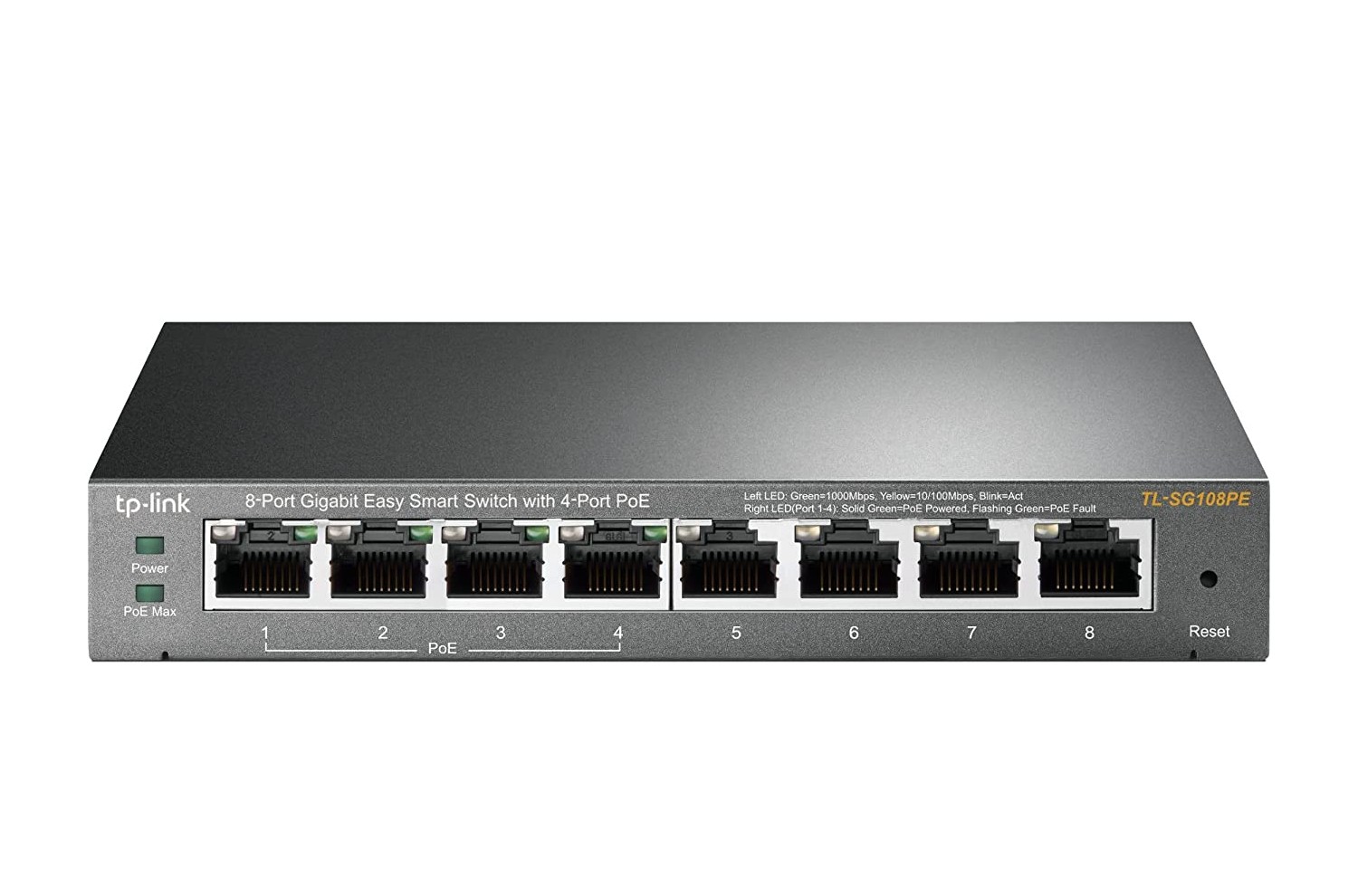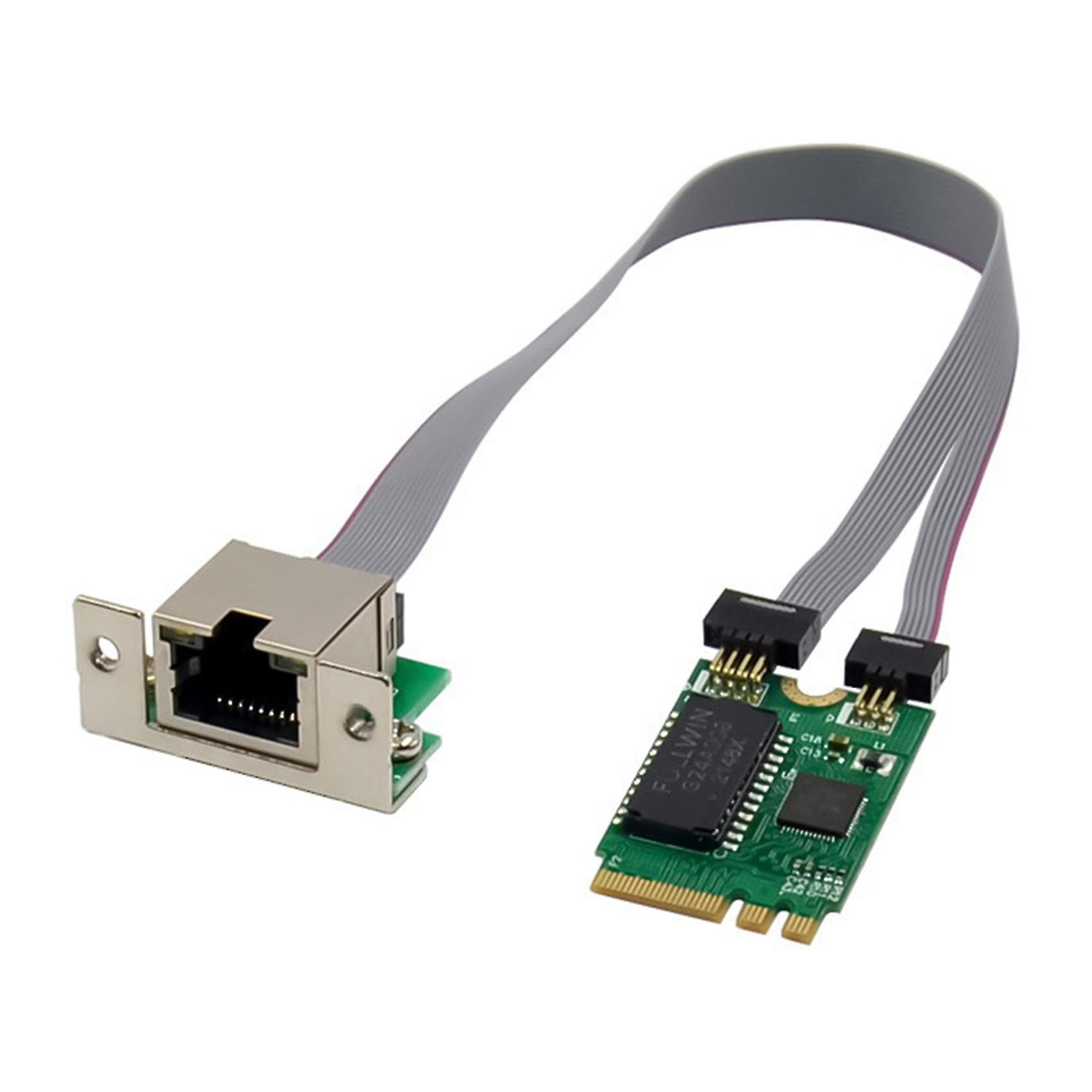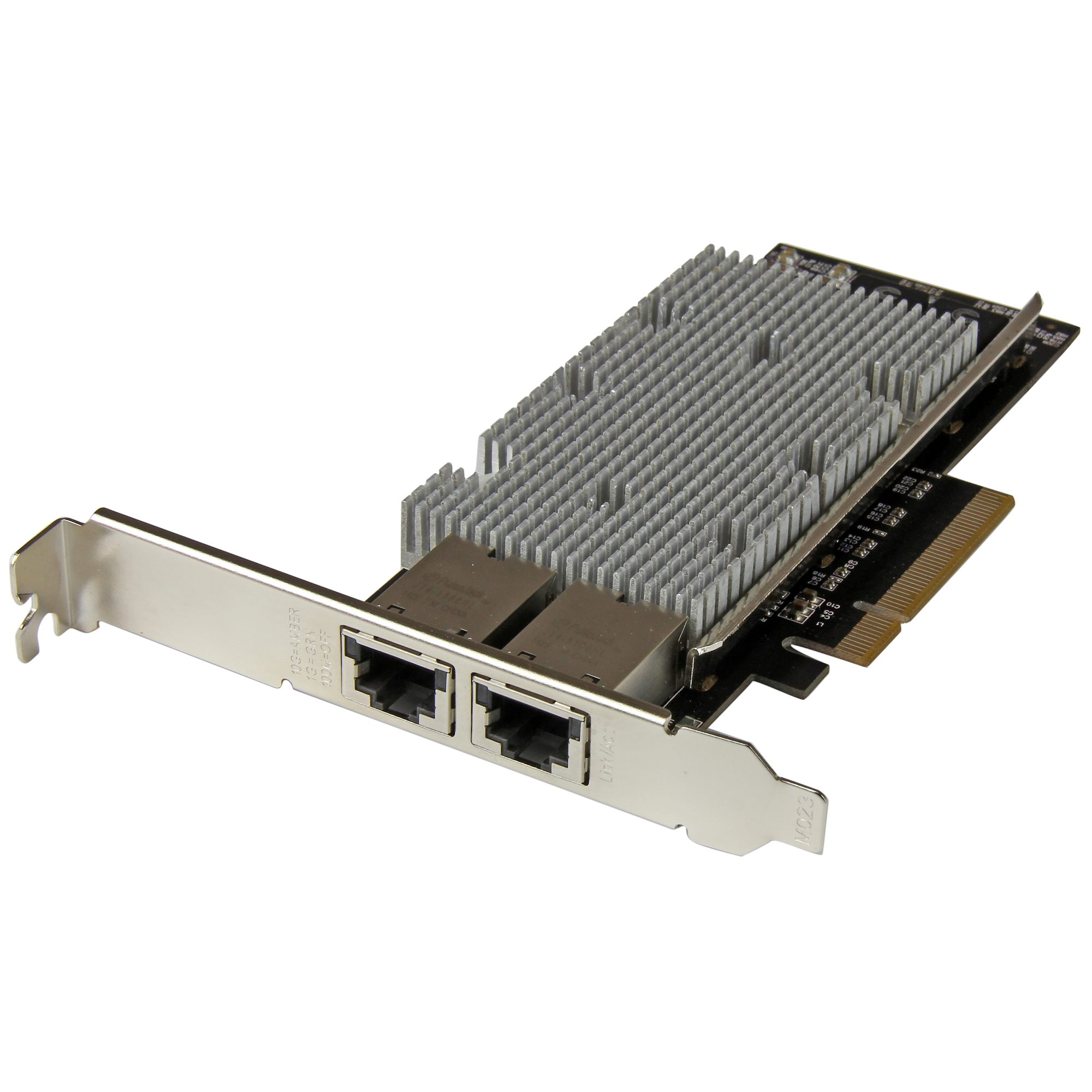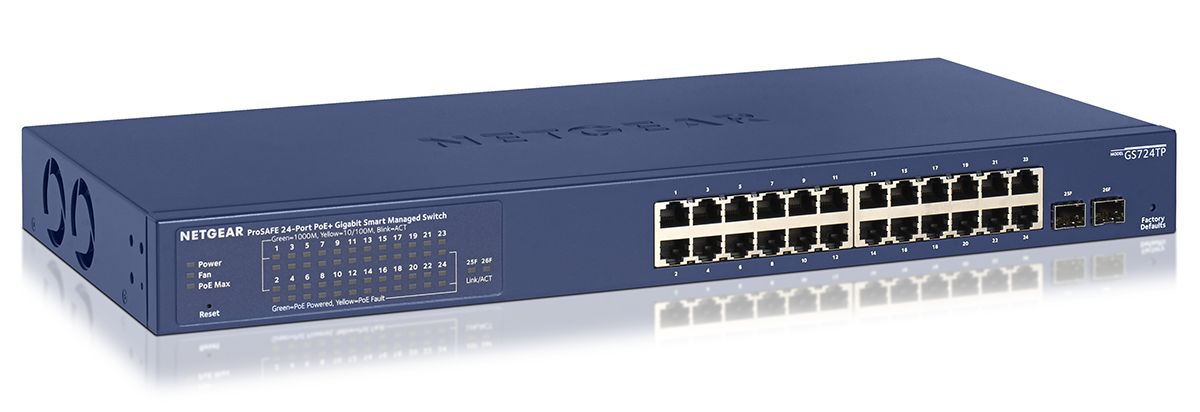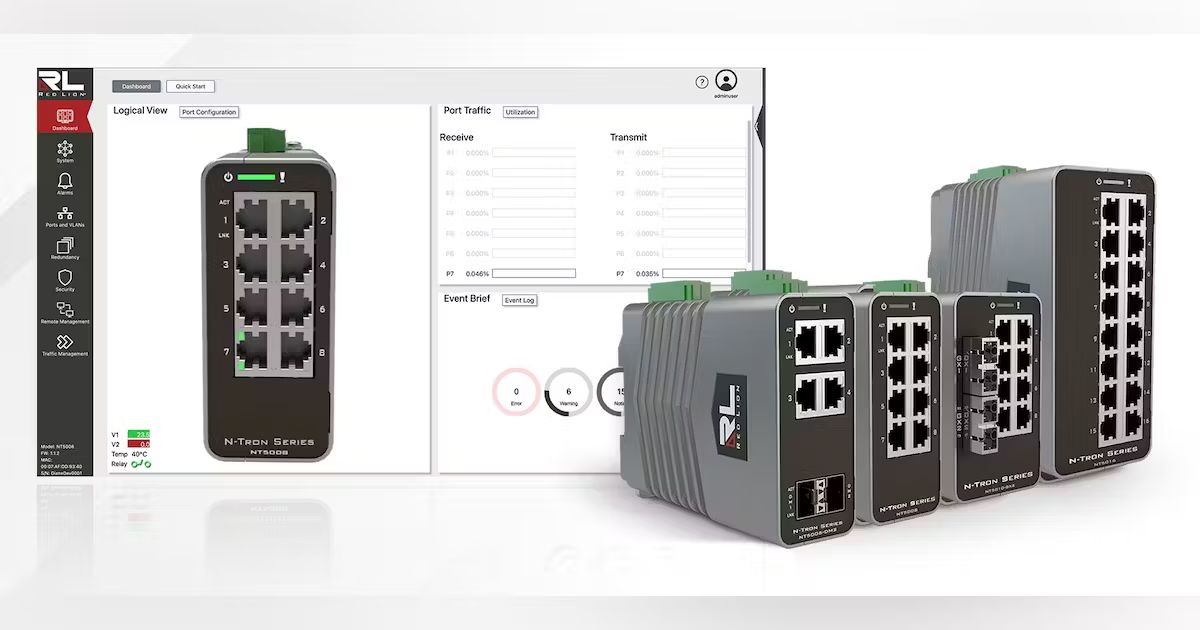Introduction
Welcome to the world of Gigabit Ethernet, where lightning-fast internet speeds and seamless connectivity are the norm. In this digital age, where information travels at the speed of light, having a reliable and high-speed network connection is essential for both personal and professional endeavors. Whether you’re a tech enthusiast, a business owner, or simply someone looking to upgrade their home network, understanding Gigabit Ethernet is crucial in harnessing the power of the internet.
Gigabit Ethernet is a networking technology that allows for data to be transmitted at rates up to 1 gigabit per second (Gbps). That’s approximately 100 times faster than traditional Ethernet connections. With Gigabit Ethernet, you can transfer large files, stream high-definition videos, and engage in real-time online gaming without experiencing time lags or buffering issues. It’s the backbone of modern networking, facilitating smoother and more efficient data transmission.
One of the main advantages of Gigabit Ethernet is its ability to handle increased bandwidth demands. As technology advances and our dependence on the internet grows, traditional Ethernet connections simply can’t keep up with the speed requirements of today’s applications. Gigabit Ethernet addresses this need, providing a faster and more reliable network connection.
While Gigabit Ethernet has gained popularity in corporate environments due to its ability to support heavy data traffic, it has also become accessible for home users. With the increasing number of devices connected to our home networks, such as smartphones, tablets, smart TVs, and gaming consoles, having a robust network connection is crucial.
In this article, we will delve deeper into the world of Gigabit Ethernet, exploring its benefits, how it works, and when to consider upgrading to this high-speed network technology. We will also compare Gigabit Ethernet to other networking options and provide guidance on setting up a Gigabit Ethernet network. By the end of this article, you will have a clear understanding of Gigabit Ethernet and its significance in today’s digital landscape.
What is Gigabit Ethernet?
Gigabit Ethernet is an advanced networking technology that allows for the transmission of data at speeds up to 1 gigabit per second (Gbps). It is an evolution of the traditional Ethernet technology, which was designed for transmitting data at lower speeds.
With Gigabit Ethernet, data can be transferred at rates that are roughly 100 times faster than those achievable with standard Ethernet connections. This high-speed transmission capability makes Gigabit Ethernet the ideal choice for applications that require large file transfers, video streaming, and real-time online gaming.
At its core, Gigabit Ethernet operates on the same principles as Ethernet, using a set of protocols and specifications to facilitate data transmission over a network. These protocols define how data is packaged, transmitted, and received by devices connected to the network.
One of the main components of Gigabit Ethernet is the use of twisted-pair copper cables, which are widely used for network connections. These cables are capable of carrying data signals at Gigabit speeds, allowing for high-speed data transmission without the need for more expensive fiber optic cables.
Gigabit Ethernet can also be implemented using fiber optic cables, which offer even higher data transfer rates and longer transmission distances. Fiber optic Gigabit Ethernet is commonly used in enterprise networks where long-distance connectivity and greater bandwidth capacity are required.
In addition to the physical cables, Gigabit Ethernet also relies on network switches and routers to facilitate data transmission between devices. These network devices play a crucial role in managing and directing data traffic, ensuring that information is delivered efficiently and reliably.
Overall, Gigabit Ethernet offers a significant improvement in network performance compared to traditional Ethernet. Its higher data transfer rates and enhanced capabilities make it the preferred choice for organizations and individuals seeking faster and more reliable network connections. With Gigabit Ethernet, you can enjoy seamless and uninterrupted data transmission for all your digital needs.
Benefits of Gigabit Ethernet
Gigabit Ethernet offers numerous benefits that make it a compelling choice for both businesses and home users. Let’s explore some of the key advantages of using Gigabit Ethernet:
- High-Speed Data Transfer: The most obvious benefit of Gigabit Ethernet is its incredibly fast data transfer speeds. With rates of up to 1 Gbps, you can transfer files, download large media files, and stream high-definition content without experiencing any lag or buffering delays.
- Improved Network Performance: Gigabit Ethernet greatly improves overall network performance. Whether you’re in an office environment or at home, you can eliminate bottlenecks and enhance productivity by ensuring that data flows smoothly and quickly between devices.
- Enhanced Multimedia Streaming: If you regularly enjoy streaming movies, TV shows, or music, Gigabit Ethernet is a game-changer. With its high bandwidth capacity, you can stream high-definition content in real-time without buffering issues, providing a superior multimedia experience.
- Faster File Transfers: Gigabit Ethernet dramatically reduces the time it takes to transfer large files. Whether you’re backing up important data, sharing files across devices, or collaborating with colleagues, Gigabit Ethernet’s speed allows for swift and efficient file transfers.
- Support for Multiple Devices: With the proliferation of smart devices, households and businesses now have multiple devices connected to the network simultaneously. Gigabit Ethernet can handle the increased bandwidth demands of these devices, ensuring a consistent and uninterrupted network experience.
- Future-Proof Investment: Upgrading to Gigabit Ethernet is a future-proof investment. As technology continues to evolve and data demands increase, Gigabit Ethernet is well-equipped to handle these advancements for years to come, making it a long-term and cost-effective solution.
These are just a few of the many benefits that Gigabit Ethernet brings to the table. Its high-speed capabilities, improved network performance, and support for multiple devices make it essential in today’s fast-paced digital world. Whether you’re a business owner looking to boost productivity or a home user seeking seamless internet connectivity, Gigabit Ethernet is the answer to your need for speed and reliability.
How Does Gigabit Ethernet Work?
Gigabit Ethernet operates on the same basic principles as traditional Ethernet but with enhancements to support higher data transfer rates. It relies on a combination of hardware, cabling, and networking protocols to facilitate the transmission of data at speeds of up to 1 gigabit per second (Gbps).
At the heart of Gigabit Ethernet is the use of twisted-pair copper cables. These cables consist of four pairs of wires that are tightly twisted together to reduce interference from external sources. The precise twisting pattern helps ensure that data signals can be transmitted without degradation over longer distances.
To transmit and receive data, devices connected to the Gigabit Ethernet network use Ethernet network interface cards (NICs) or Ethernet ports. These ports are built into computers, routers, switches, and other devices, allowing them to send and receive data packets within the network.
Gigabit Ethernet utilizes a set of networking protocols, collectively known as the Ethernet standard, to govern how data is packaged, transmitted, and received. These protocols define how data is divided into chunks called frames, how devices communicate with each other using unique MAC (Media Access Control) addresses, and how collisions or data conflicts are managed and avoided.
When data is sent over a Gigabit Ethernet network, it is divided into frames and encapsulated with necessary address information, error checking codes, and control information. These frames are then transmitted over the network using electrical or optical signals, depending on the type of cable being used.
As the data travels through the network, switches play a crucial role in directing the frames to their intended destinations. Switches examine the destination MAC address of each frame and forward them specifically to the port where the destination device is connected, ensuring efficient and secure data delivery.
Once the data frames reach their destination, the receiving device’s NIC or Ethernet port extracts the data, verifies its integrity, and forwards it to the appropriate software or application for processing.
Gigabit Ethernet can be implemented using different types of cables, including twisted-pair copper cables and fiber optic cables. While twisted-pair copper cables are more commonly used for shorter distances and within buildings, fiber optic cables are preferred for longer distances and high-bandwidth applications.
Overall, Gigabit Ethernet is a robust and efficient networking technology that allows for the rapid transmission of data. Its combination of advanced hardware, cabling, and networking protocols ensures a reliable and high-performance network connection for various applications and environments.
Differences between Gigabit Ethernet and Fast Ethernet
When comparing Gigabit Ethernet and Fast Ethernet, it’s important to understand the key differences between these two networking technologies. While both aim to provide reliable data transmission, there are several factors that set them apart:
- Data Transfer Speed: The most significant difference between Gigabit Ethernet and Fast Ethernet is the data transfer speed. Fast Ethernet, also known as 100BASE-T, supports a data transfer rate of up to 100 megabits per second (Mbps). In contrast, Gigabit Ethernet offers data transfer rates of up to 1 gigabit per second (Gbps), which is 10 times faster than Fast Ethernet.
- Bandwidth Capacity: With its higher data transfer rate, Gigabit Ethernet provides a significantly larger bandwidth capacity compared to Fast Ethernet. This increased capacity allows for smoother data transmission, especially in environments where there is a heavy demand for bandwidth, such as in businesses or multimedia-intensive applications.
- Cable Compatibility: Fast Ethernet typically uses Category 5 (Cat5) or Category 5e (Cat5e) twisted-pair copper cables for data transmission. These cables are capable of carrying data signals up to 100 Mbps. In comparison, Gigabit Ethernet requires more advanced cables, such as Category 5e (Cat5e), Category 6 (Cat6), or Category 6a (Cat6a) cables, to support the higher data transfer rates of up to 1 Gbps.
- Network Equipment: Gigabit Ethernet generally requires more advanced network equipment, including switches, routers, and network interface cards (NICs), to handle the higher data transfer rates. Fast Ethernet equipment is typically less expensive and less complex, making it a more affordable option for smaller networks or older infrastructure.
- Compatibility: While Gigabit Ethernet is backward compatible with Fast Ethernet, the reverse is not true. This means that devices equipped with Gigabit Ethernet ports can communicate with devices using Fast Ethernet, but the data transfer will be limited to the slower Fast Ethernet speed.
- Applications and Environments: Due to its higher performance, Gigabit Ethernet is well-suited for applications that require large data transfers, high-quality real-time multimedia streaming, and heavy bandwidth usage. It is commonly used in businesses, data centers, and multimedia production environments. On the other hand, Fast Ethernet is still sufficient for basic internet browsing, email, and typical home networking needs.
Overall, the main differences between Gigabit Ethernet and Fast Ethernet lie in their data transfer speed, bandwidth capacity, cable requirements, equipment complexity, and application suitability. Gigabit Ethernet offers much faster data transmission and greater bandwidth capacity, making it the preferred choice for high-demand networks or applications that require superior performance and efficiency.
When Should You Upgrade to Gigabit Ethernet?
Deciding when to upgrade to Gigabit Ethernet depends on several factors, including your current network requirements, the number of connected devices, and the speed you desire for data transmission. Here are some considerations to help you determine if it’s time to make the switch:
- Increased Bandwidth Demand: If you find that your network is frequently congested or experiencing slow data transfer speeds, upgrading to Gigabit Ethernet can alleviate these issues. Gigabit Ethernet offers significantly higher bandwidth capacity, allowing for smoother data transmission and improved network performance.
- Large File Transfers: If your work involves regular file transfers, such as backing up large amounts of data or sharing files within your organization, Gigabit Ethernet can greatly enhance productivity. The faster transfer speeds ensure that file transfers are completed in less time, saving you valuable minutes or even hours.
- Streaming and Multimedia: If you enjoy streaming high-definition videos, online gaming, or using multimedia-intensive applications, Gigabit Ethernet provides a more seamless and immersive experience. The higher data transfer rates eliminate buffering issues and reduce latency, allowing for smooth and uninterrupted multimedia streaming.
- Multiple Devices: If you have multiple devices connected to your network, such as computers, smartphones, tablets, smart TVs, and gaming consoles, upgrading to Gigabit Ethernet is beneficial. It can handle the increased bandwidth demand from these devices simultaneously, ensuring a stable and reliable network connection for all your devices.
- Future-Proofing: If you’re looking to future-proof your network infrastructure, Gigabit Ethernet is a smart investment. As technology advances and data demands continue to grow, Gigabit Ethernet will be able to sustain the higher bandwidth requirements for years to come, saving you from frequent network upgrades.
- Business Needs: For businesses, upgrading to Gigabit Ethernet can provide a competitive advantage. It enables faster collaboration, smoother communication, and improved productivity. Additionally, it supports the increasing reliance on cloud-based applications, video conferencing, and other data-intensive operations.
Ultimately, the decision to upgrade to Gigabit Ethernet depends on your specific needs and requirements. If you find that your current network is struggling to meet your demands in terms of speed, bandwidth, and connectivity, it may be time to consider the transition to Gigabit Ethernet. With its faster data transfer rates, improved network performance, and future-proofing capabilities, Gigabit Ethernet can transform your network into a powerful and efficient platform for all your digital activities.
Gigabit Ethernet vs. Wi-Fi
When it comes to network connectivity, two popular options are Gigabit Ethernet and Wi-Fi. Both offer advantages and serve different purposes. Let’s compare Gigabit Ethernet and Wi-Fi to understand their differences and help you make the right choice for your networking needs:
- Speed: Gigabit Ethernet provides faster data transfer speeds compared to Wi-Fi. With Gigabit Ethernet, you can achieve speeds of up to 1 gigabit per second (Gbps), while Wi-Fi speeds typically range from a few hundred megabits per second (Mbps) to a few gigabits per second (Gbps), depending on the Wi-Fi standard and network conditions.
- Reliability: Gigabit Ethernet is known for its reliability. It offers a stable and steady network connection, free from interference or signal loss that can sometimes occur with wireless networks. Wi-Fi, on the other hand, can be affected by various factors like distance from the access point, interference from other devices, and physical obstructions, which can lead to occasional drops in connection or reduced speeds.
- Range: Wi-Fi has the advantage of wireless connectivity, allowing devices to connect without the need for physical cables. This makes it convenient for mobile devices and situations where mobility is essential. However, Gigabit Ethernet has a longer range and is not limited by the same distance constraints as Wi-Fi. Ethernet connections can reach much farther distances without signal degradation, making it ideal for larger homes or offices.
- Security: Gigabit Ethernet connections are generally considered more secure than Wi-Fi. Wired connections are inherently harder to intercept compared to Wi-Fi signals, which can be susceptible to unauthorized access if not properly secured. With Gigabit Ethernet, data transfers are confined to the physical network, reducing the risk of external security breaches.
- Scalability: Gigabit Ethernet is highly scalable, allowing for easy expansion and upgrades. Adding more devices to a Gigabit Ethernet network typically involves connecting them with additional cables or using network switches. Wi-Fi, on the other hand, may require the installation of additional access points or signal extenders to maintain a strong and reliable wireless connection as the number of devices increases.
- Congestion: Wi-Fi networks can be susceptible to congestion, especially in densely populated areas or environments with multiple Wi-Fi networks. This congestion can result in slower speeds and reduced performance. Gigabit Ethernet, being a wired connection, is not affected by the same congestion issues and can provide more consistent and reliable network performance.
Ultimately, the choice between Gigabit Ethernet and Wi-Fi depends on your specific needs and circumstances. If you require fast and reliable connectivity, especially for bandwidth-intensive tasks or in areas where signal strength may be an issue, Gigabit Ethernet is the preferred choice. For mobility, flexibility, and basic internet usage in areas with good signal strength, Wi-Fi provides a convenient wireless solution.
In some cases, a combination of Gigabit Ethernet and Wi-Fi can be beneficial, especially in environments where wired connections are required for stationary devices, while wireless connectivity is desired for mobile devices. By considering your specific requirements, you can determine the appropriate balance between Gigabit Ethernet and Wi-Fi to create a reliable and efficient network infrastructure.
Common Uses for Gigabit Ethernet
Gigabit Ethernet is a versatile networking technology that has a wide range of applications across various industries and environments. Let’s explore some of the common uses for Gigabit Ethernet:
- Enterprise Networks: Gigabit Ethernet is widely used in enterprise networks, providing fast and reliable connectivity for large-scale operations. It supports data-intensive applications, server connections, and efficient collaboration among employees.
- Data Centers: Data centers rely on Gigabit Ethernet for their high-performance and high-bandwidth networking needs. Gigabit Ethernet enables seamless communication between servers, storage systems, and networking equipment, ensuring smooth data transmission and processing.
- Video Surveillance: Gigabit Ethernet is instrumental in video surveillance systems, where high-resolution IP cameras capture and transmit video footage. Gigabit Ethernet ensures uninterrupted, high-quality video streaming and efficient data storage for surveillance applications.
- Media and Entertainment: In the media and entertainment industry, Gigabit Ethernet is crucial for handling large file transfers, video editing, and streaming high-definition content. It enables seamless collaboration and efficient workflows for film and music production studios, content creators, and broadcasting companies.
- Education Institutions: Educational institutions, such as universities and schools, utilize Gigabit Ethernet to support high-speed internet access for students and faculty. It enables seamless online learning, multimedia content delivery, and efficient network management within educational environments.
- Healthcare: Gigabit Ethernet is integral to healthcare facilities, providing reliable and high-bandwidth connectivity for critical patient care systems, remote consultations, and the transmission of medical data. It ensures the rapid transfer of medical records, diagnostic images, and real-time patient monitoring.
- Research and Development: Research facilities and laboratories heavily rely on Gigabit Ethernet for data-intensive scientific experiments, simulations, and data analysis. It enables fast data transfer rates, collaboration among researchers, and seamless access to shared resources.
- Cloud Computing: With the rise of cloud computing, Gigabit Ethernet plays a vital role in connecting data centers to the internet and facilitating the efficient transfer of data to and from cloud service providers. It ensures fast and reliable cloud connectivity, enabling businesses to leverage cloud services and resources effectively.
- Smart Homes and IoT: Gigabit Ethernet is increasingly used in smart homes and IoT (Internet of Things) environments. It provides the necessary bandwidth to support multiple connected devices, such as smart TVs, home automation systems, security cameras, and voice assistants, ensuring seamless connectivity and efficient data transfer.
These are just a few examples of the common uses for Gigabit Ethernet. Its fast data transfer speeds, reliability, and high bandwidth capacity make it an essential technology in various industries, enabling businesses and individuals to leverage the power of high-speed connectivity for enhanced productivity and seamless communication.
How to Set up Gigabit Ethernet
Setting up Gigabit Ethernet involves a few key steps to ensure a reliable and high-speed network connection. Here’s a guide to help you get started:
- Check Equipment Compatibility: Ensure that your network devices, such as routers, switches, and network interface cards (NICs), support Gigabit Ethernet. Verify that your cables, whether twisted-pair copper cables or fiber optic cables, are also compatible with Gigabit Ethernet.
- Connect Ethernet Cables: Connect one end of an Ethernet cable to your device’s Ethernet port and the other end to the corresponding port on your router or network switch. Repeat this process for each device you want to connect to the network.
- Configure Network Devices: Access the configuration interface of your router or network switch by entering its IP address in a web browser. Set up the necessary network settings, such as IP addresses, subnet masks, and gateway addresses, to ensure proper communication within the network.
- Enable Gigabit Speed: In the configuration interface of your network devices, check if Gigabit Ethernet is enabled. This ensures that the devices are operating at the maximum speed of 1 gigabit per second (Gbps) and are not limited to lower speeds like Fast Ethernet.
- Test Network Connection: Once the physical connections and configurations are in place, conduct a network test to ensure proper functionality. Test the data transfer speeds between devices connected to the Gigabit Ethernet network to verify that they are operating at the expected high-speed performance.
- Secure the Network: Implement security measures to protect your Gigabit Ethernet network from unauthorized access. Set up strong passwords for your network devices, enable encryption protocols like WPA2, and regularly update firmware and software to ensure the latest security patches are in place.
- Optimize Performance: Fine-tune your Gigabit Ethernet network for optimal performance. This includes configuring Quality of Service (QoS) settings to prioritize certain types of traffic, ensuring proper cable management to minimize interference, and periodically checking for network congestion or potential bottlenecks.
If you require assistance with the setup process, consult the user manuals or online resources specific to your network devices. Additionally, contacting a professional network technician can ensure a smooth and efficient setup, especially in more complex network environments.
Remember, Gigabit Ethernet offers fast and reliable network connectivity, so taking the time to set it up correctly will ensure a seamless and efficient networking experience for all your data-intensive activities.
Conclusion
Gigabit Ethernet has revolutionized the way we connect and transfer data in today’s digital world. With its lightning-fast speeds, high bandwidth capacity, and reliable performance, Gigabit Ethernet has become the standard for fast and efficient network connectivity. Whether in enterprise environments, homes, or various industries, Gigabit Ethernet provides the foundation for seamless data transmission, enhanced productivity, and improved user experiences.
In this article, we explored the fundamentals of Gigabit Ethernet, understanding its capabilities, benefits, and how it differs from other networking technologies. We discussed its applications in different sectors, ranging from business and education to media and healthcare. Additionally, we provided guidance on setting up Gigabit Ethernet, ensuring that you can make the most out of this advanced networking technology.
As technology continues to advance, Gigabit Ethernet remains a future-proof investment. With its superior speeds and scalability, Gigabit Ethernet can adapt to the increasing demands of data-intensive applications, cloud computing, and the ever-expanding Internet of Things (IoT).
Whether you are looking to upgrade your home network, expand your business infrastructure, or improve network performance, Gigabit Ethernet offers the speed, reliability, and versatility necessary to meet your networking needs. By taking advantage of Gigabit Ethernet, you can unlock a world of seamless connectivity, faster data transfers, and enhanced productivity.
So, embrace the power of Gigabit Ethernet and harness the vast potential it offers. Upgrade your network, enjoy lightning-fast speeds, and experience a new level of connectivity that will propel you forward in this digital age.







